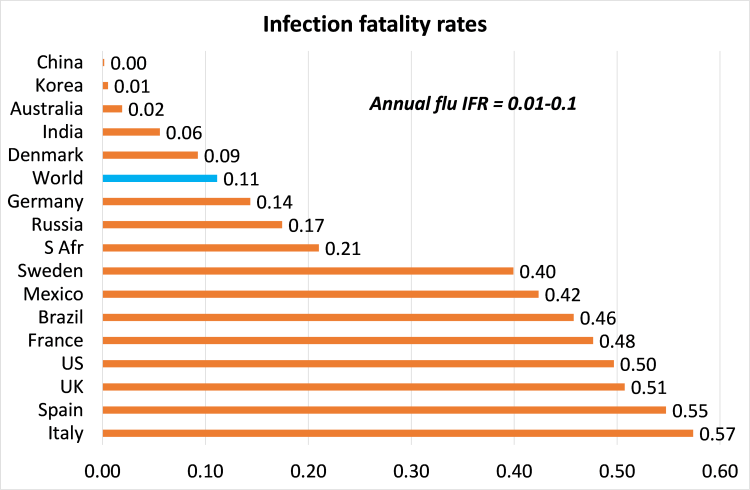Some interesting statistics indeed.
Michael Roberts is an Economist in the City of London and a prolific blogger
Cross-posted from Michael Roberts Blog

The winter wave of COVID-19 cases continues to rage in Europe, North America and even Latin America and Asia. So, as the vaccines get rolled out across the world to varying degrees of rapidity and volume, let’s measure the damage done in deaths from COVID-19 as we approach the end of 2020.
Which countries have been hit hardest? Using the Worldometer coronavirus database, I’ve selected some of the major countries globally in Chart 1 (measured as deaths per million of population). It’s the large European countries and the US that lead the way on this measure, followed closely by Brazil and Mexico, two Latin American countries that have made little effort to contain the pandemic or provide any robust health support. The countries that have done that, like Germany, have a much lower death rate. And countries like South Africa and India, with relatively young populations, also have lower death rates.
Chart 1. Deaths per million
The second measure is the case fatality rate (CFR) ie the number of deaths per COVID-19 cases reported to the authorities (Chart 2). Mexico shows a shocking death rate of over 8% of cases, most probably because of the failure to test and trace and the weakness of its health system. Note that China’s CFR is high too, but that was all recorded in the first month of pandemic in Wuhan. The major European countries are well above the world average CFR of 2.2% after ten months. The US is just below the world average and well-organised countries like Germany, Korea and Denmark are even further down. India’s young population may explain its low CFR.
Chart 2. Case fatality rates (%)
Finally, there is the infection fatality rate (IFR). This measures the death rate from all those infected. The World Health Organisation estimates that there are about 20 times more infections than cases reported, including all those who were asymptomatic. Using that estimate, I find that around 18% or so globally have so far been infected, well below the so-called ‘herd immunity’ ratio of about 50-60% minimum. So those governments that opted for a strategy of lite-lockdowns, hoping for herd immunity, like Sweden, have been proved wrong. Indeed, Sweden’s IFR is pretty close to that of hard-hit Mexico (Chart 3).
Chart 3. Infection fatality rates (%)
The IFRs in most of the major countries are about 0.4-0.6%, more or less as forecast by various sample studies. And my estimate of 18% infected globally may well be too high. If I lowered the global infection rate to 15%, then the IFRs would be in the 0.6-0.7% range. That compares with the annual flu IFR of less than 0.1%. So for these hard-hit countries, COVID-19 is at least five times more deadly than annual flu. And, of course, we are now finding out that there is often long-lasting damage to human organs from COVID, unlike flu.
The world IFR is only 0.11%, or close to the maximum annual flu IFR, on my estimates. But that world IFR average is skewed lower by countries with large youthful populations like India or large populations like China where infections have been drastically contained. In most countries, infections are still spreading and that means many more deaths. Roll on the vaccines.
We have begun our Fundraising Campaign 2020. Help BRAVE NEW EUROPE bring authors at the cutting edge of progressive thought together with activists and others with articles like this. If you would like to support our work and want to see more writing free of state or corporate media bias and free of charge, please donate here.





Be the first to comment